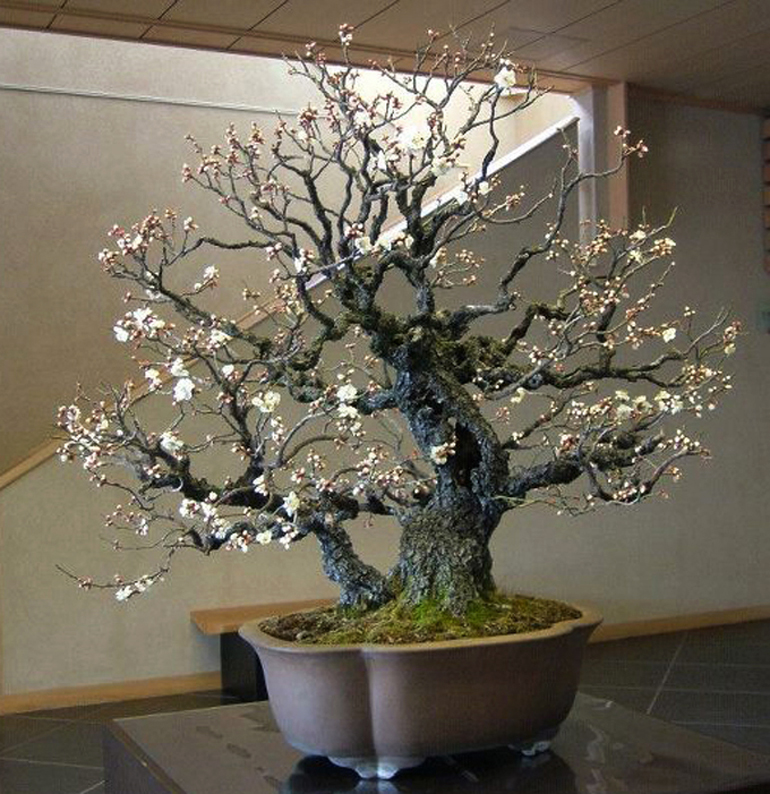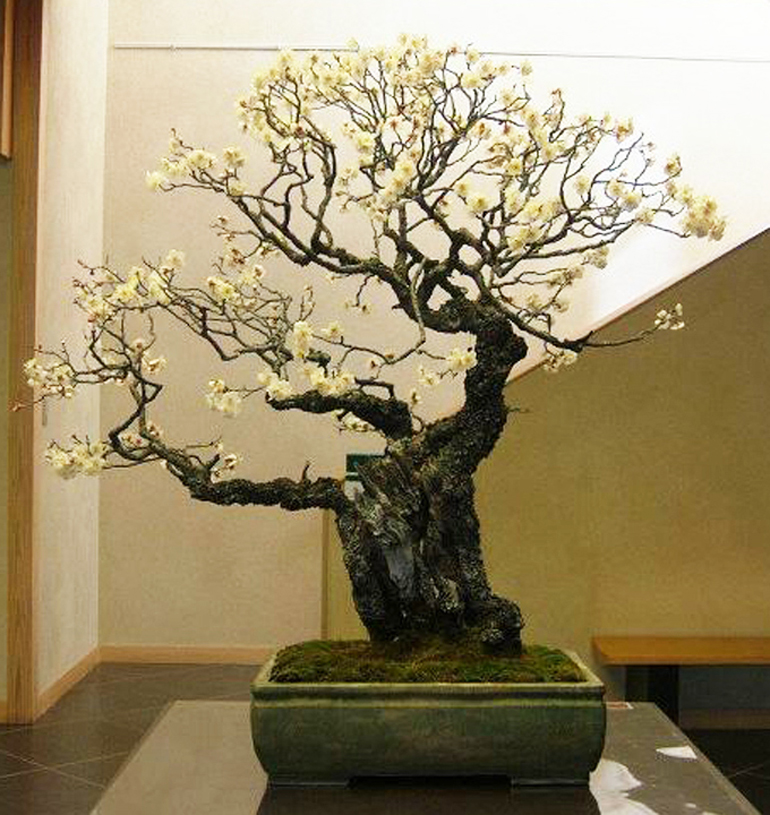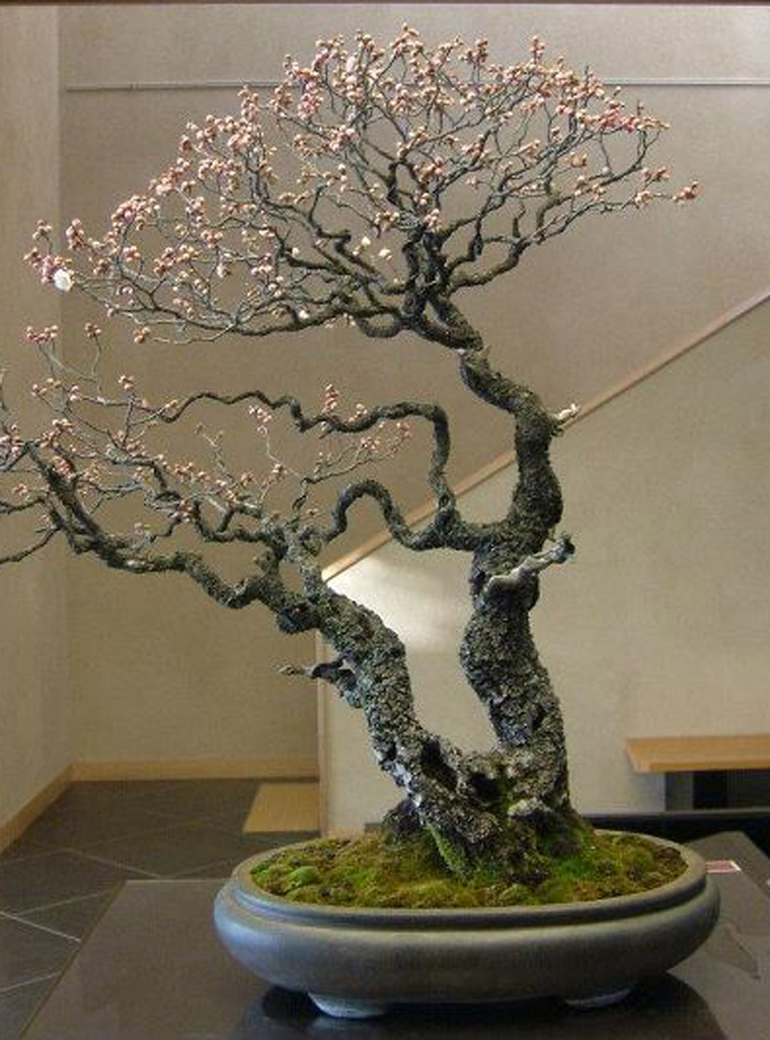
Sabamiki and uro from the Omiya Bonsai Art Museum. Aside from this magnificent old Ume’s overall power and beauty, there are a several things that might catch your eye: the flowers and buds, the aged bark (Ume bark develops an aged look fairly fast) and the hollowed out trunk (sabamiki). If you look closely you can also see several uro (small hollows that are left on deciduous trees where branches have rotted and fallen off, though bonsai uro may well be man made).
This winter to end all winters seems like a good (if a little perverse) time to look at some flowering bonsai from the deep riches of our archives. This one is from July 2012 (with a little present tense editing). Some of you can look out your window now and see flowers everywhere. Some of us can dream.
What’s in a name?
Ume have several names: Prunus mume (or just mume), Japanese apricot (or sometimes Japanese flowering apricot) and Chinese plum to name the most common. In the bonsai world, Ume seems to be the name of choice.
Great bonsai
Ume is an Asian native and even though they make great bonsai, for some reason not many nurseries grow them here in North America (Muranaka Nursery on the California central coast is one exception). As far as I know, they aren’t that difficult to grow as bonsai and they have numerous positive traits: they show the appearance of great age while still fairly young (due mostly to rugged bark and rapid thickening), they combine graceful elegance and tough looking ruggedness, and offer a striking display of buds and flowers late each winter. Altogether a noble candidate for your bonsai collection.
Omiya Bonsai Art Museum
The trees shown here reside at the Omiya Bonsai Art Museum in Saitama City, Japan. The photos are from Yoshitomo Ishizuka’s facebook page.

Shari. Though it’s a little difficult to see, this Ume features some deadwood (shari) on the trunk. You usually see deadwood on conifers, as it tends to rot fairly quickly on deciduous trees. However, on Ume deadwood rots slowly, so the shari on this tree appears natural. Note from the present: you can preserve deadwood for a very long time with lime sulfur. This is one reason you see bonsai hundreds of years old that still have prominent deadwood.

Fluid motion. Ume trunks and branches often display graceful, fluid motion. This distinctive feature is one more reason that Ume make such great bonsai.